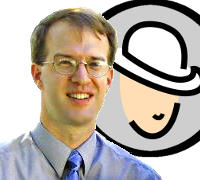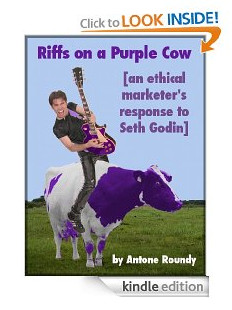When you purchase through links on our site, we may earn an affiliate commission (details)
Should I Send My List Broadcasts or Follow-Ups?
by Antone Roundy | 5 Comments | Blogging, Mailing Lists, Podcast
There are two types of messages you can send to your list: "follow-ups" that are sent to each subscriber in a scheduled sequence, and "broadcasts" that go to the entire list at once. Each type has its strengths and weaknesses.
Follow-Up Messages
Follow-ups are ideal for sending a coordinated sequence of messages designed to turn new subscribers into paying customers. For example, you might give away a free report or software tool to new subscribers, and then use a series of follow-up messages to explain the advantages of upgrading to a paid version or buying a related product.
Once you've inserted each message into your follow-up sequence, it's sent to each new subscriber a fixed number of days after they subscribe. It's as if you were following up individually with each subscriber, but it runs on autopilot.
Follow-ups are powerful, but they have weaknesses. First, they're not useful for truly time-sensitive offers, because they go to each subscriber at a different time. They're sometimes used for artificially time-sensitive offers, but subscribers can easily bypass time limits by deleting browser cookies and/or subscribing with a different email address.
Another problem with follow-ups is that if you insert new messages into the middle of your sequence, subscribers who've already passed that message may receive a later message twice. (This problem really should be fixed by mailing list services, but at least some of the major providers haven't yet addressed it.)
Broadcast Messages
Since you control exactly when broadcasts are sent to all of your subscribers, they're ideal for time-sensitive messages.
Broadcasts are also ideal if you're constantly generating new content, and aren't concerned with whether new subscribers receive past content. For example, if you blog regularly, you can set up an automated "blog broadcast" that monitors your blog for new posts and broadcasts them to your list.
The problem with broadcast messages is that you have to keep producing new content for your list to keep the relationship warm.
You Can Use Both
Of course, you can use both types of messages with the same list. Some marketers generate new content sporadically, broadcast any time-sensitive messages, and tack the rest onto their end of their follow-up sequence.
Be aware that if you send frequent broadcasts, they can disrupt the normal follow-up sequence. If your follow-ups are a closely related series, you should avoid sending broadcasts to subscribers who haven't received them all. Most mailing list services should enable you to specify that broadcasts shouldn't be sent to subscribers who haven't yet received a particular follow-up message.
What If You're Not Sending Either?
What if you've followed the advice of your mentors and created a mailing list, and you've figured out a way to entice people to subscribe, but you haven't yet figured out what to send.
Maybe you have 3, 4, 7, 10 follow-up messages queued up, but you're not broadcasting, so once a subscriber finishes the initial sequence, they just sit there gathering moss.
Ray Edwards addressed that situation today on his blog:
Here's the lesson: there is a fortune in the follow-up.
...
But why stop with seven messages? Why stop with 10?
Here's my recommendation: block out 3 to 4 hours one day, and write up at least 52 follow-up messages. ... Make sure every e-mail in your follow-up sequence has a call to action, even if it's simply redirecting prospects back to your blog...
My point is simple: once someone raises their hand and volunteers to be marketed to, why on earth would you ever stop marketing until they ask you to stop?
Here's my recommendation: either find a way to consistently produce and mail new content, or follow Ray's recommendation.





October 29th, 2010 at 2:10 pm
Perfect timing Antone, I've been wrestling with this recently and decided to combine the two approaches.
For non time sensitive messages I've written a message to be broadcast to only those subscribers who have finished the sequence and tweaked the message and added it to the end of the sequence.
That way everyone on my list will eventually be exposed to the offer either immediately or in the future.
Obviously as I continue this the sequence will be getting longer and longer but it reduces the risk of any subscriber missing the message.
October 29th, 2010 at 2:17 pm
Thanks for the comment, Mark! I'd mentioned both parts of that approach, but hadn't combined the two as you did.
September 5th, 2012 at 5:10 am
Antone, very good points.
Personally I like to use my follow-ups for evergreen content, so I don't have to keep going back and making changes. Kind of a set & forget approach.
I then use broadcasts for time sensitive offers.
The problem I find is that as I build up different lists form different squeeze pages, it becomes quite a chore & quite confusing to manage them all... e.g. do I manually add the same follow up email to each of my lists (the ones in the same niche), or do I save time by sending a broadcast to all of them.
The problem with the broadcast approach, is that those who opt-in after the broadcast then miss out on the email, which should have been a follow up.
Also, how do you stop a subscriber to several of my lists, getting duplicate broadcasts in their inbox?
Any suggestiongs? Thanks
September 5th, 2012 at 7:19 am
Mo - depending on the capabilities of your mailing list service, here's something you might do: if you're treating your lists that are in the same niche the same after they've completed the initial follow-up sequence, see if there's a way to automatically move them all to a single after-the-follow-ups list at that point. Then you only need to maintain that one list on an ongoing basis, and you won't have an issue with duplicates.
September 7th, 2012 at 8:40 am
Hi Antone,
Great idea. I use Aweber, I'll have to see if it's possible with them.
Thanks